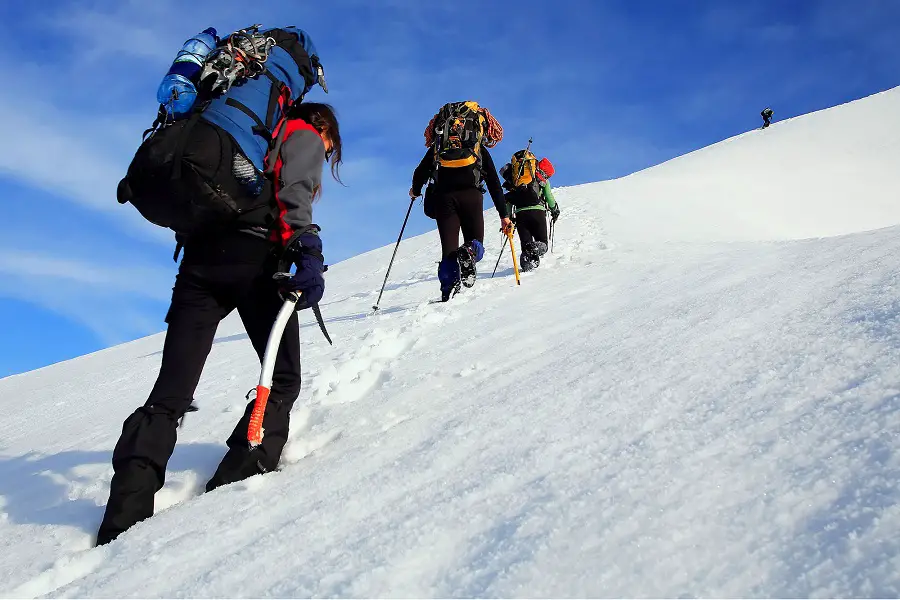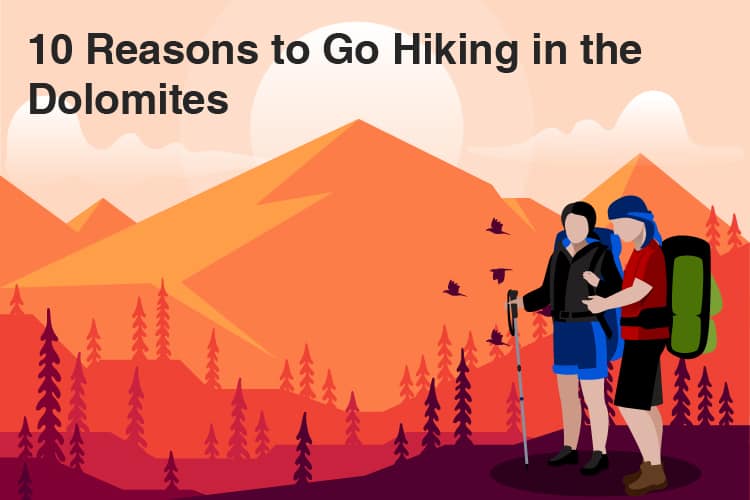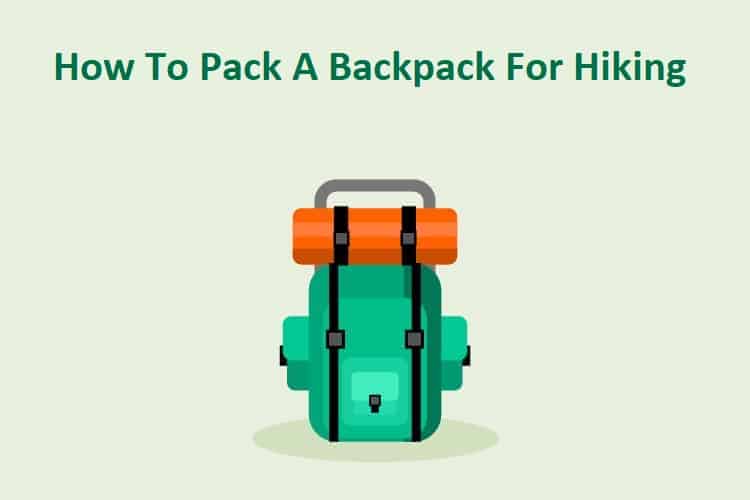At some point in every hiker’s time on the trails, there comes a moment when their eyes are drawn to the toothy silhouettes forming the skyline above and their thoughts turn to making their trails a little more vertical in nature.
But there’s more to tackling a big mountain than meets the eye, particularly if that mountain happens to have—as big mountains are apt to have—any technical sections that demand more than just ample reserves of grit, determination, a healthy pair of lungs, and calves of steel.
In this article, our aim is to help seekers of their first big summit do so safely with a look at the five most important skills you need to learn before any big-mountain adventure.
1. Navigation

Finding our way on well-signed trekking routes is one thing; doing so on a big mountain is another entirely. While on the former we can almost always be certain to find well-trodden trails, other hikers to point us in the right direction if need be, plaques or signs giving directions, and/or colored flashes that act as waymarkers at regular in intervals.
Depending on where you are in the world, on the latter the “trails”—if there are any—are likely to see far less traffic and might also be unsigned, obscured by snow or cloud cover, and have very little in the way of waymarking beyond the odd cairn that you may or may not be able to trust.
All this means that route-finding in the high mountains can be far from simple and, as such, in most cases you’ll need to be self-sufficient and competent with the use of a map and compass, learning such skills as triangulation, walking on a bearing, and using contour lines to get where you need to go safely.
2. Safety
Avalanche awareness
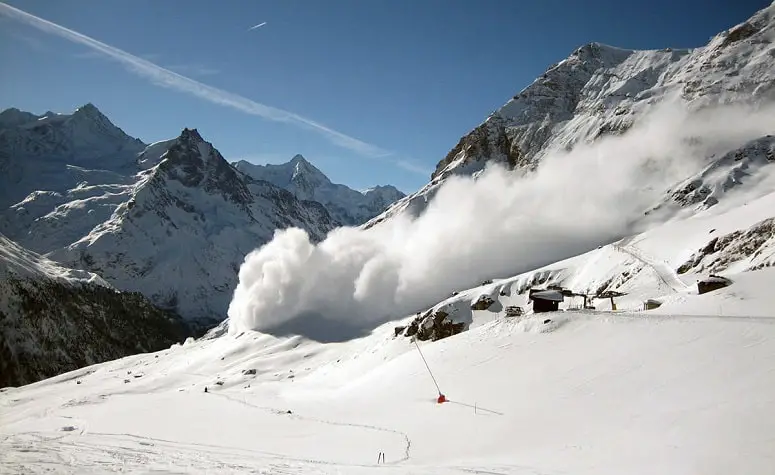
Avalanches are one of the leading causes of death and injury in the mountains the world over and even in summer months many of the higher ranges will still have enough snow cover to pose a high risk of “The White Death.”
If your first big mountain happens to be one where there will be substantial snow cover, there are a number of steps you can take to minimize your risk of being caught in an avalanche. These include:
- Check avalanche forecasts online before setting off
- Dig a snow pit to assess the stability of the snowpack
- Stay clear of slopes with an angle of 25-45 degrees—on which most avalanches occur—if at all possible
- Carry and learn how to use an avalanche transceiver, a snow shovel, and avalanche probe
- Rethink your trip if there has been significant recent snowfall or an abrupt change in weather conditions
Crevasse rescue
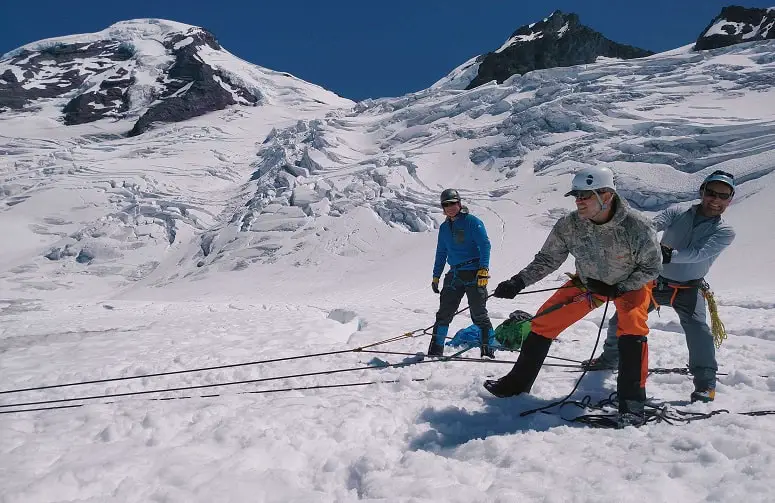
Many big mountain routes around the world involve a glacier crossing at some point en route to the summit. While this may strike the fear of death into many a newbie mountaineer, there’s no reason to view glacier crossings with unnecessary apprehension as long as you have learned a few must-have skills, done your research beforehand, and are climbing with an experienced team or partner who is familiar with traveling on glacial terrain.
Beyond the standard ropework, crampon and ice-axe use mentioned below, the most important skill to master for glacier travel is crevasse rescue. While we hope you never have to use it, knowing how to do so is far preferable to leaving your partner dangling in a chilly, icy tomb—or, worse, being stuck down there yourself—until a mountain rescue team comes to your assistance.
When traveling on glacial terrain, the most imperative safety measures to take include the following:
- Always rope-up with a partner – or, better, in a team of three
- Take in coils to reduce the length of rope between you and your partner
- Identify the safest route across the glacier before setting off
- Survey the terrain, keeping an eye out for weak snow bridges and crevasses to be avoided
- Finally, if recent snowfall has obscured the route across a glacier and hidden crevasses, don’t be too proud or stubborn to turn back
If a member of your team falls into a crevasse, then retrieving them requires building a belay or “haul system.”
The most effective of these include:
- Self-rescue using prussik loops or Flemish bend
- The Z-pulley
- The C-pulley
Ropework

The basics of the ropework required for moderate mountaineering include learning how to tie knots, belaying a partner, short-roping, abseiling, and walking on a rope over difficult or exposed terrain. All of these skills, gladly, can be learned either at home or at a local crag or climbing wall before you set off to take on your peak.
Extreme weather
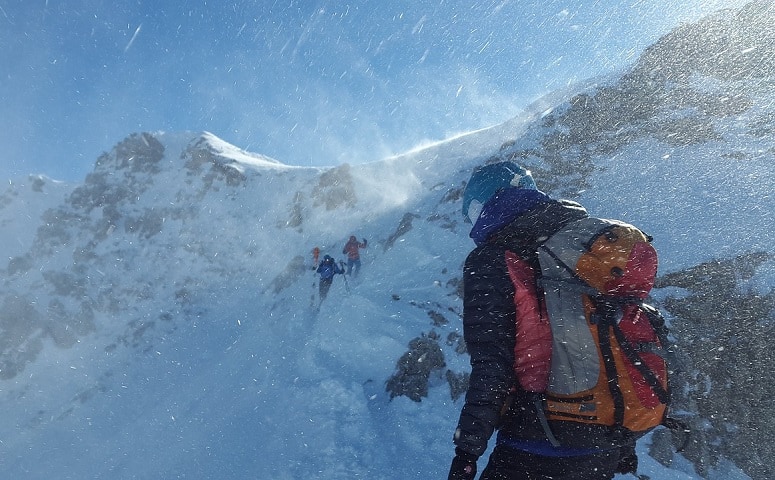
As with all aspects of mountain-going, safety starts at home—in this case, both with the assessment of forecasts and packing the gear required to deal with any meteorological mischief. One of the best resources we know of for mountain forecasts worldwide can be found here.
Wilderness First Aid

The remoteness of most big mountains around the globe and the difficulty in conducting rescues in mountainous terrain means it’s wise to ensure you can be self-sufficient should you or a teammate require treatment for an illness or injury. For more on wilderness first aid, check out this very useful resource from 50miler.
Other safety measures well worth learning before taking on your first big mountain include:
- How to signal a rescue helicopter for help
- Digging a snow hole
- Nighttime navigation
3. How to Use Technical Gear
Depending on the route you choose to tackle, the use of technical mountaineering equipment might be required. Some of the gear items you might need to get familiar with include:
Crampons
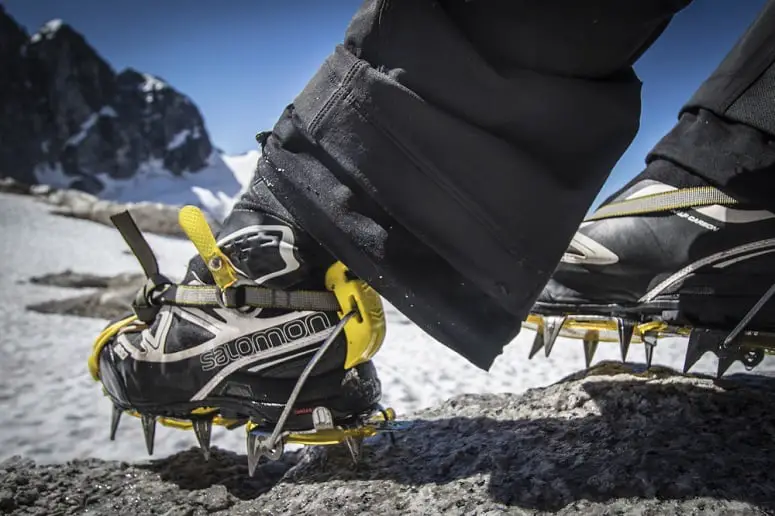
Most high-mountain ascents will require the use of crampons even in summer months.
With crampons, the main skills to be learned are:
- Front-pointing on steeper slopes
- The French flat-footing technique
Before rushing out and buying a pair of crampons, be sure to check that your boots are crampon compatible and which type of crampons (C1, C2, C3) they can be used with. For more on crampon compatibility, check out this handy article from Adventure Alternative.
Ice-Axe
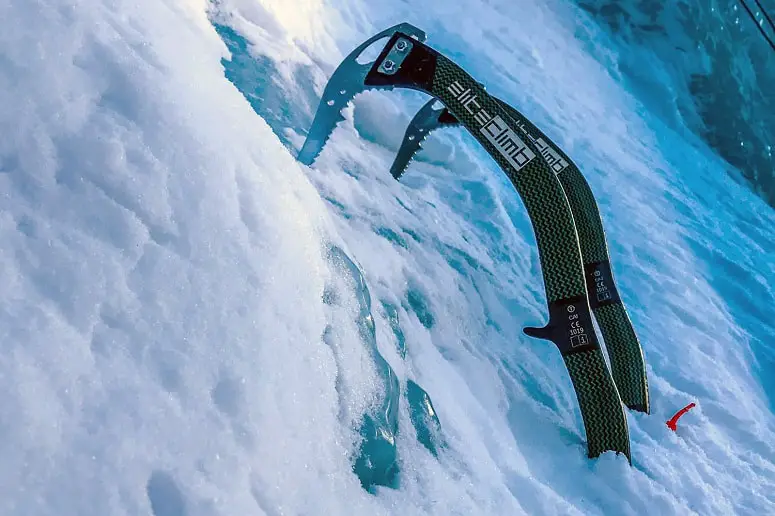
If you’re traveling on terrain where crampons are necessary, the chances are you will also need to carry an ice-axe. An ice-axe allows you to ascend steep snow or icy sections of any route safely and can also act as a “braking device” should you happen to take a slip.
In most cases, the type of ice-axe required for non-technical mountain ascents is a Piolet-style snow axe or a modern hybrid model with a slight curve in the shaft, but should be long enough to ease planting and provide adequate stability—anything above 60cm is usually your best bet, though taller users may wish to shoot as high as 75cm.
When walking with your ice-axe, always use the leash to secure it to your wrist and plant it into the snow above your body on the high side of the slope.
If you slip, turn your body to face the slope, hold the axe diagonally across your body with the point dug into the snow, and place all of your weight on the axe until you come to a stop. It can also help to raise your midriff so you get more purchase on the slope with the axe and your feet.
Other hardware (cams, nuts, slings, ice screws)

It’s unlikely that your first big mountain will require the use of more technical mountaineering equipment like cams, nuts, and ice screws, but on many routes there’s a chance that you will be required to second a leader using such equipment.
As such, familiarizing yourself with the handling and use of this gear can be useful (if only to give you peace of mind!), particularly if your route features long rock sections, exposure, or is at or above alpine grade III.
4. Scrambling
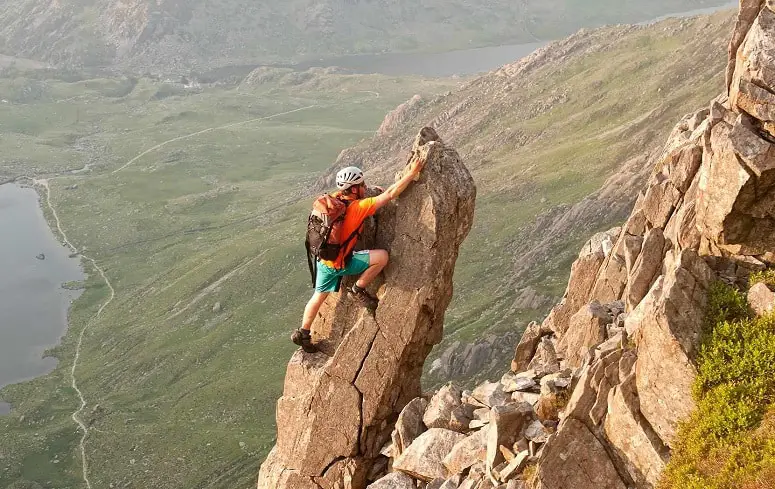
Even if the mountain you choose to take on doesn’t require a lot of ropework or the use of technical mountaineering equipment, there’s a very high chance that reaching the summit will entail at least a little bit of scrambling.
In a few words, scrambling means using both your hands and your feet to negotiate steeper sections of rock that don’t quite merit description as an out-and-out rock climb.
When scrambling, a few techniques can be used to maximize safety:
- Ensure you maintain three points of contact with the rock at all times
- Push upwards with your feet as opposed to pulling with your arms
- Keep your center of gravity (your torso) close to the rock
- Ensure your pack is fitted close to your body with both the chest and waist straps in order to stabilize your load
- Test each hold with a slight tug or push before committing all of your weight to it
- Always face the rock
5. Having the Right Mental Attitude
The right mental attitude is perhaps the most valuable tool in every mountaineer’s armory.
But what makes your mental attitude “right” for high-mountain adventures?
Though there are many mental attributes and approaches that will hold you in good stead on your high-mountain ascents, the most desirable of the bunch are humility, patience, and expectation management.
Humility
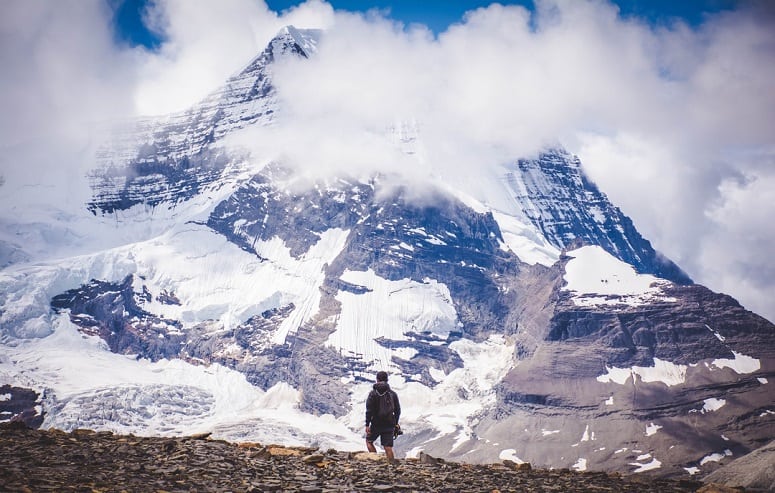
Very few things in life are conducive to feelings of insignificance, littleness, and awe as large mountains. How we react to these feelings, however, can vary greatly from one climber to the next.
On the one hand, there are those who are apt to view the mountain as an enemy to be conquered at all costs and approach their climb with a type of chest-beating machismo, hubris, and bravado; on the other, there are those who go with the utmost respect for the environment, the dangers involved, and other members of their climbing party.
We’ll let you guess which of the two is most likely to enjoy their time in the mountains and return safely at the end of their trip…
Patience
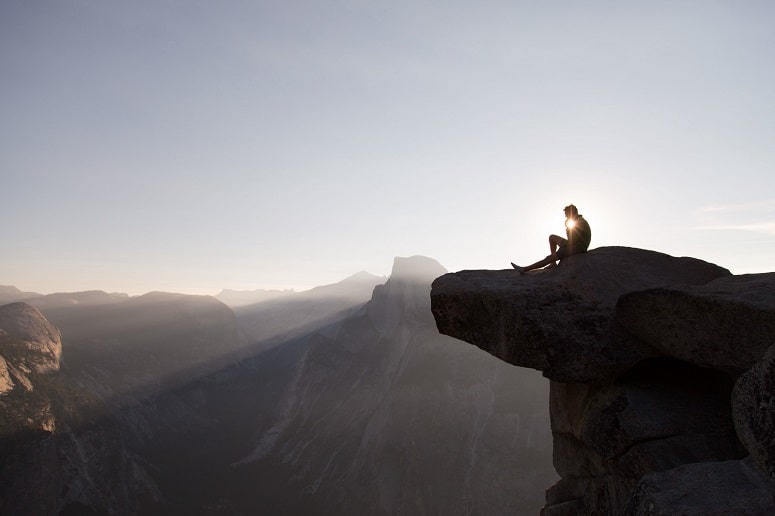
Multi-day expeditions in the mountains can try the patience of your average saint. Factors such as inclement weather, snow conditions, abrasive climbing partners (most become so after spending a certain number of days on end in a tent together!), and general fatigue all combine to make many a mountaineer a little on edge and impatient from time to time.
When we lose patience, however, we seriously increase the risk of making mistakes or rash decisions—both of which, we should add, could prove to be fatal in the type of extreme environments encountered on big mountains.
To counter this eventuality, we’d recommend you try to keep a level head and accept that things won’t always go quite as planned.
The variables involved in mountain climbing are numerous and sitting it out for a few hours (or even days) while waiting for conditions to improve, the weather to clear, a partner to recover from an illness or injury, or during acclimatization is just part of the big-mountain experience.
Even if you have to turn back for any reason, there’s no shame—almost invariably, even the most accomplished, elite mountaineers out there who have lived to tell the tale of their adventures are those who didn’t balk at the idea of “living to fight another day” or succumb to “summit fever” when conditions weren’t favorable.
Expectation management

Many first-time aspirants of big mountains are apt to approach their excursion with unrealistic or unhelpful expectations. These can go one of two ways: either we expect an action-packed, Cliffhanger-style epic K2 or a simple, leisurely stroll in the sunshine not too dissimilar to our regular day hikes in the foothills nearer to home.
In both cases, our pre-trip assumptions can lead to disappointment if the challenge is less or more than we anticipated or, just as commonly, if the weather happens to make life more difficult than we would have liked.
My advice? Go with an open mind, prepared to meet all hardships and adversity with a level head, and enjoy the experience—whatever its details—for what it is.
Conclusion
While mountaineering is a pursuit that promises many notable rewards, few of us are under any illusion that it is not also one without its inherent risks, too. As such, taking on your first big mountain can be an experience as daunting as it is sure to be exciting and utterly unforgettable.
By learning the above five skills, however, you’ll be putting yourself one step ahead of many would-be mountaineers and making meaningful progress towards ensuring your trip is the first of many happy—and safe—ones to come.


